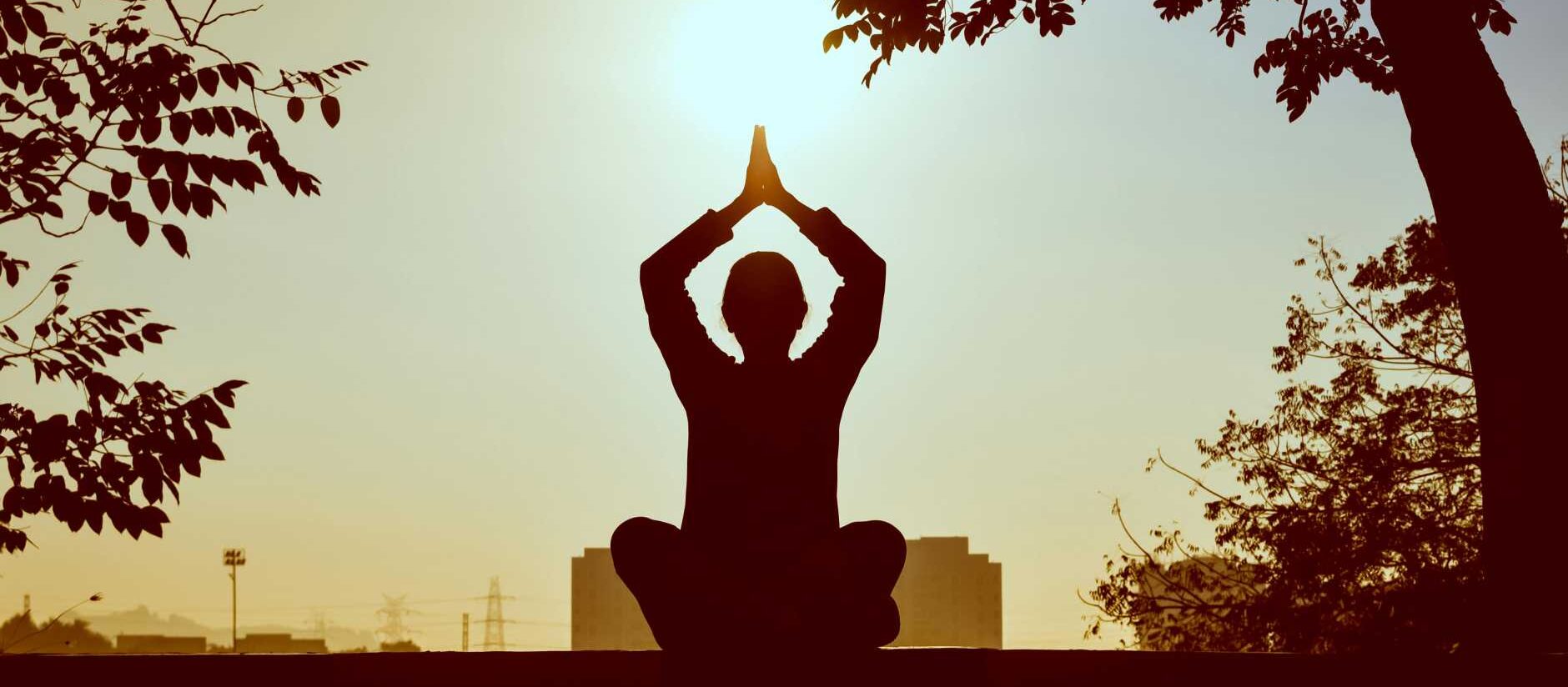Have you ever confused the terms “mindfulness” and “meditation”? You are not alone. People often use these words as if they meant the same. This creates a wrong picture of what these terms really mean. Let’s consider the common question asked: “Do I need to sit still for an hour to be mindful?” or “Is meditation the only way to find peace?”
Although these two practices are connected, they aren’t identical. The difference is not only about how to spell them. But plays a key role in building a practice that fits into a busy life. This conceptual clarity releases pressure and helps us set realistic goals. It opens the door to a more peaceful and present way of living, even in times of chaos.
This blog post clears the concepts of mindfulness and meditation. We will start with simple definitions. Then, we will use a powerful analogy to show how they work together. Along with it, we will provide steps to bring both into your daily routine. By the end, you will learn to practice mindfulness as a skill and how meditation training can strengthen this skill.
What is mindfulness? Being Awake to Your Life
So, what is mindfulness? Basically, it’s your ability to be fully present. It means you know where you are and what you are doing. You aren’t overwhelmed by surroundings or random thoughts.
Mindfulness can be imagined as a gentle spotlight in the mind. You can bring the spotlight to your inner world, thoughts, feelings, and body sensations. You can also point it at the outside world, sounds, sights, and smells. But the most important part is your attitude. It requires carefully observing everything without judging. In your mind, you notice a thought and let it pass without labelling it “good” or “bad.”
Practicing Mindfulness In Your Day
You don’t need special tools or a silent room to practice mindfulness. The best thing is that it can be practiced anywhere, irrespective of time. Every ordinary moment can be turned into a practice ground. For example:
- Mindful Eating: Concentrate well while eating. This means paying attention to the taste of the food, noticing the texture, and smell. Also, don’t forget to put your phone away and be completely present while eating.
- Mindful Walking: Feel your feet whenever you touch the ground. Additionally, pay attention to your breath and the air touching your skin.
- Mindful Listening: Listen carefully when someone talks to you and try to understand their feelings. Also, you need to stop thinking about what to say next.
Science shows this practice works. A study found that people who practice mindfulness had positive changes in their brains. This means mindfulness helped them with learning, memory, and managing emotions. Hence, mindfulness is a real skill. It has a direct impact on well-being.
What Is Meditation? The Gym For Your Mind
If mindfulness brings awareness of the surroundings in daily life, then meditation is the practice that builds it. That means meditation is a workout for the mind. It is like lifting weights to empower the brain.
You choose a point of focus during meditation. This could be your breath, a word, or a feeling in your body. The goal is not to empty the mind. That is a myth. The real goal is to practice focusing. The mind will wander. But whenever you notice it drifting, bring the attention back to the anchor point. This act of returning focus is the core of the practice. It is a rep for the attention muscle.
Different Ways to Meditate
There are several styles of meditation. Here are a few:
- Focused Attention: This is great for beginners. You focus on one thing, for example, your breath. Each time your mind wanders, guide it back using breath control. This builds concentration.
- Open Monitoring: You should monitor everything that comes into awareness. This includes your thoughts, feelings, and sounds. Observe these without attachment and be swept away in their stories.
- Loving-Kindness: It’s necessary to cultivate emotional qualities like compassion, kindness, and goodwill. Focus your heart. Send wishes of kindness and happiness to yourself and others.
Research reflects that meditation has real benefits. It improves your attention, clarity, and self-awareness. Meditation is the training that makes practicing mindfulness in life easy.
The Perfect Analogy: Mindfulness v/s Meditation Difference
The best way to understand the relationship between mindfulness and meditation is with a simple analogy.
Meditation is going to the gym. It’s a well-planned activity targeting specific muscles. You do bicep curls to strengthen your arms. But you don’t do curls while carrying groceries, right? This is because the gym is for focused training. Similarly, meditation is a dedicated time to train attention.
Mindfulness is general fitness. Mindfulness is similar to using strength and energy every day. It helps to carry groceries, play with kids, or climb stairs. The fitness built during dedicated gym sessions (meditation) directly enhances the ability and ease in daily activities (mindfulness).
You aren’t “at the gym” when carrying groceries. Similarly, you aren’t “meditating” when drinking coffee. However, the strength and stamina you built in the gym make carrying groceries easier. Likewise, the focus and awareness cultivated during meditation make coffee drinking look like a more natural and accessible state of mind.
Knowing The Difference Between Mindfulness And Meditation
Understanding the distinction releases the pressure. It prevents you from thinking that you have to be perfect.
- It Takes Away Pressure: It’s not a failure if you missed a meditation session. Because mindfulness is the goal. Even two minutes of deep breathing is a great “workout.” Every single mindful breath during a stressful moment counts. This is a kind and sustainable approach.
- It Creates More Opportunities: Your abilities aren’t limited to a cushion after you get the difference between mindfulness and meditation. You are mindful while waiting in line, washing dishes, or even when listening to a friend. In short, this theory can be practiced in every part of life.
- They Help Each Other: Meditation brings mindfulness during the day. Being mindful makes sitting down and meditating easier. They work in a positive cycle.
How To Practice Mindfulness and Meditation
The optimum approach is to combine formal meditation and informal mindfulness. Here is how to begin.
Step 1: Try “Micro-Meditations”
You don’t need to meditate long. Instead, start meditating 3 to 5 minutes a day. But remember, consistency matters. To do that, select a regular time, perhaps right after waking up or before going to bed. Then stay on track with the help of a simple timer or a meditation app. The goal is not to achieve perfection but to show up and practice getting attention on breath every time.
Step 2: Intentionally Schedule Mindful Moments
Select a couple of routine activities and designate them as “mindful moments.” This could be brushing your teeth, morning coffee, or taking a shower. The activity doesn’t matter itself. What matters is your intention during this activity and completely engaging with your senses. In the shower, feel the water on your skin, smell the scent of the soap, and listen to the sound of streaming water. If the mind drifts in between, bring it back gently to the sensory experience of the shower. This is a mindful action.
Step 3: Notice the Benefits
Pay attention to the effects of these small practices.
- Track Your Formal Practice: Record micro-meditation sessions every day. Note down the duration and perhaps how it felt (e.g., “calm,” “restless,” “focused”).
- Capture Your Informal Moments: Replace actions while practicing mindfulness. For example, “Mindfully having afternoon tea instead of scrolling” or “Taking three deep breaths when feeling frustrated in traffic.
- Reflect on the Benefits: Write a brief note on the changes observed in the week. Ask questions like, “Am I feeling less reactive and more focused?” Noticing moments of joy? This reflection reinforces positive behavior and helps you to progress with time.
Conclusion: Two Partners for a Calmer Life
Mindfulness and meditation are not rivals. They are partners. Meditation is the focused training of the mind. Mindfulness is the skill you use in life.
You don’t have to choose either of them. Embrace meditation as a daily workout. Embrace mindfulness as a new way to experience the world. The combination supports you every day. This journey is not about perfection but about building a gentle awareness that makes life richer and peaceful.
Share this content:




